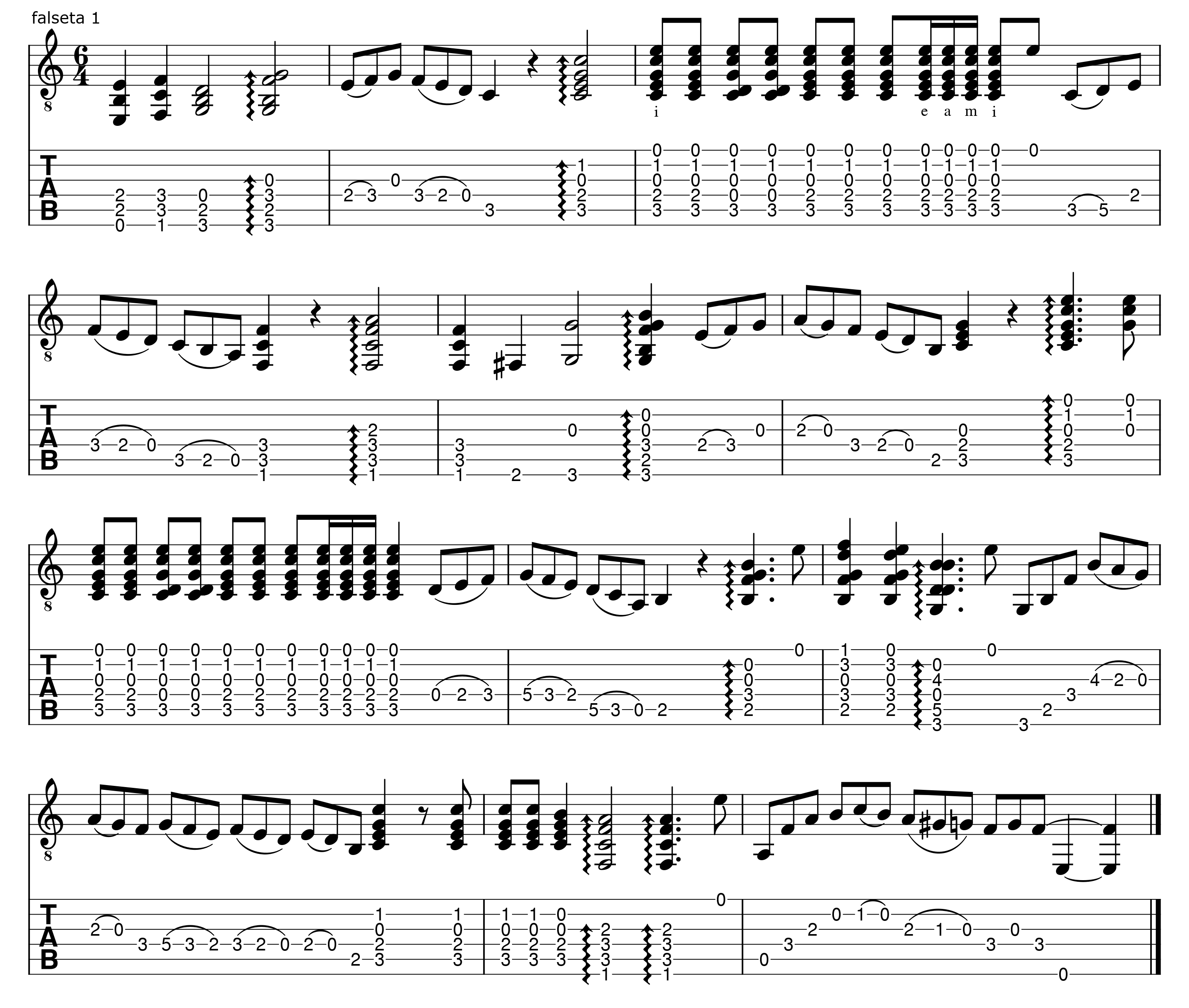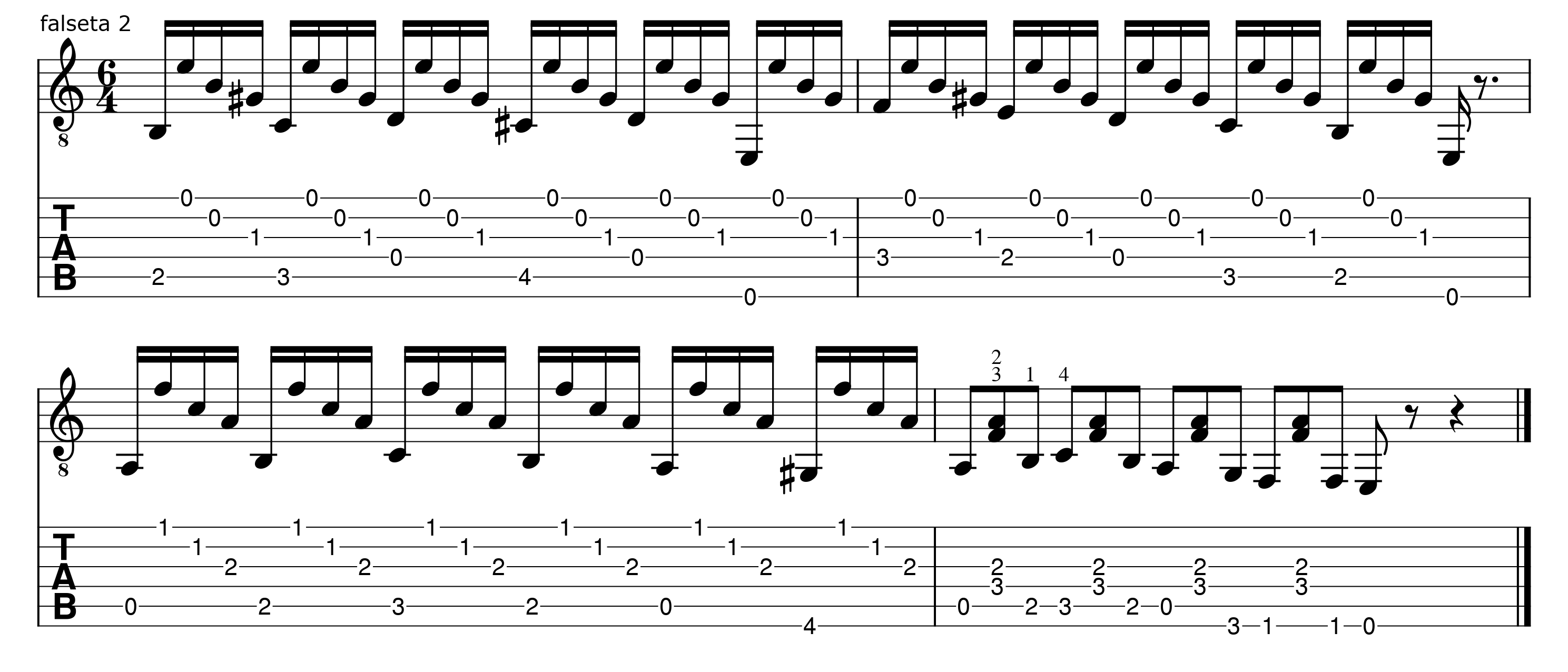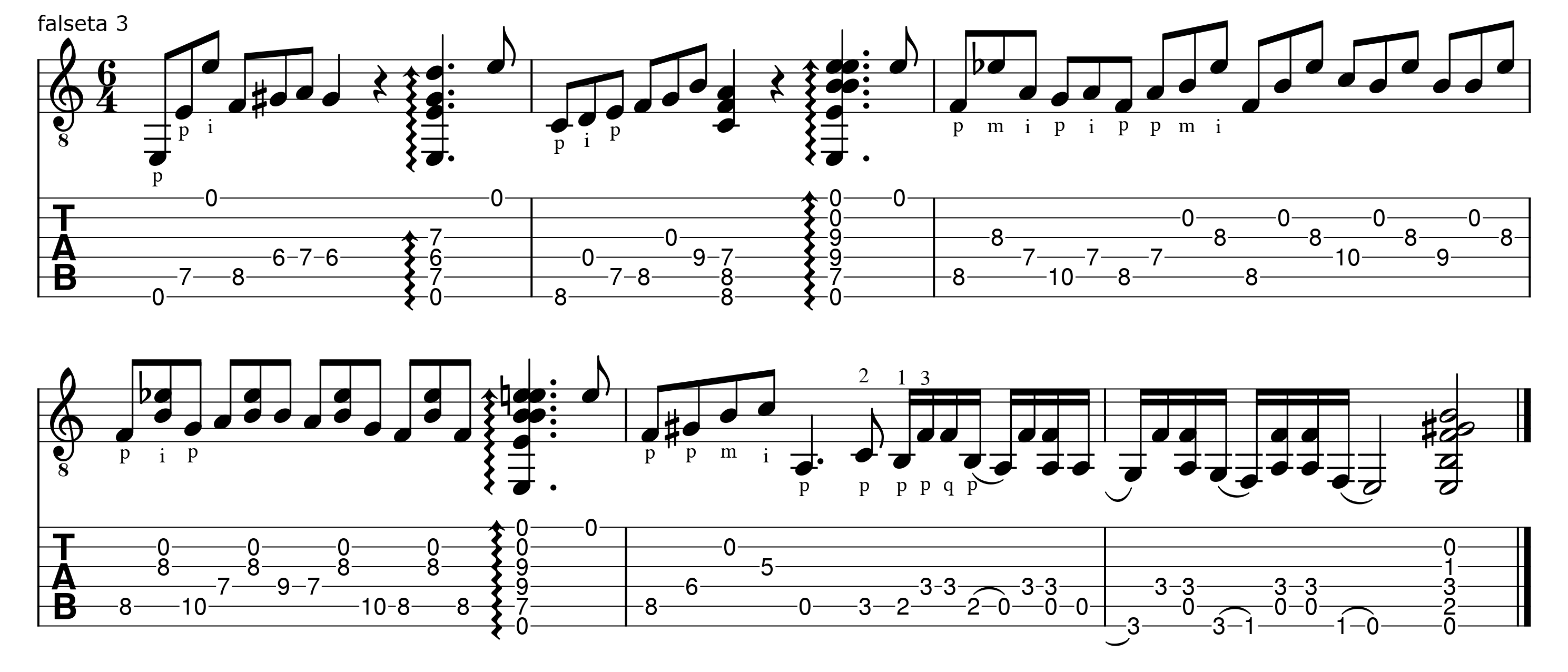
Here is a fandango with three different falsetas in a single audio file. The rhythmic fandango, often called fandanguillo or fandango de Huelva, is played over a fast six-beat rhythm accented on beats three and five, although nearly all players today tap their feet on beats one and four (the combination of these accented beats is what gives the rhythmic fandango its special quality). The rhythm of sevillanas is very similar, with pauses between sections. There are excellent recordings of fandangos by Manolo de Badajoz, Niño Ricardo—the greatest player of all time in this style—, Paco de Lucía and Pepe Habichuela. Echoes of them all are present in this piece.
I haven't written out the basic strumming between the falsetas or the tapping (click here for examples of the basic rhythm). In this piece, the tapping is usually heard on beats four and six during the moments of inactivity following the stressed third and fifth beats. Varying combinations of nail and flesh are used.
(0:10-0:37 in the audio) The first falseta is based on the chords that accompany the singing. Most everything except the strumming is played with the thumb. Strum lightly for the rasgueados in measures three and seven. The index plays downstrokes on the beat and upstrokes off the beat. The falseta alternates between variations on thumbed chords, strumming and slurred lines. Notice the symbol on beat five, indicating a smooth but forceful downward thumbstroke. Lean into it and think full and round. At seven points in the falseta this attack is used on beat five, and on two occasions it is used on beat three. The durations of the slurred lines gradually increase from two beats (second measure) to five beats (end of ninth measure). Measure 12 is played with just the thumb.

(0:47-0:55 in the audio) This is a very basic version of an idea heard from just about all players. The arpeggios ring out but the last bass notes in the first two measures are cut short. In the third measure, the symbols are a suggested left-hand fingering. The p-i-p mechanism in measure four was inspired by the playing of Melchor de Marchena.

(1:04-1:18 in the audio) The open-string arrangement in the second measure is a technique called "campanela" (or "cross-picking" among country guitar players) in which notes in a phrase are substituted with their open-string equivalents. Rafael Riqueni makes brilliant use of this technique. The p-i-p mechanism in the fourth measure is reminiscent of Ricardo. The alzapúa in the fifth and sixth measures is played with tight up-and-down thumbstrokes. Be sure to use rest strokes just before each slur. You can try including the A on the third string at the second fret. The extra voice is nice, but it forces you to use your ring finger for the slur onto the sixth string.
